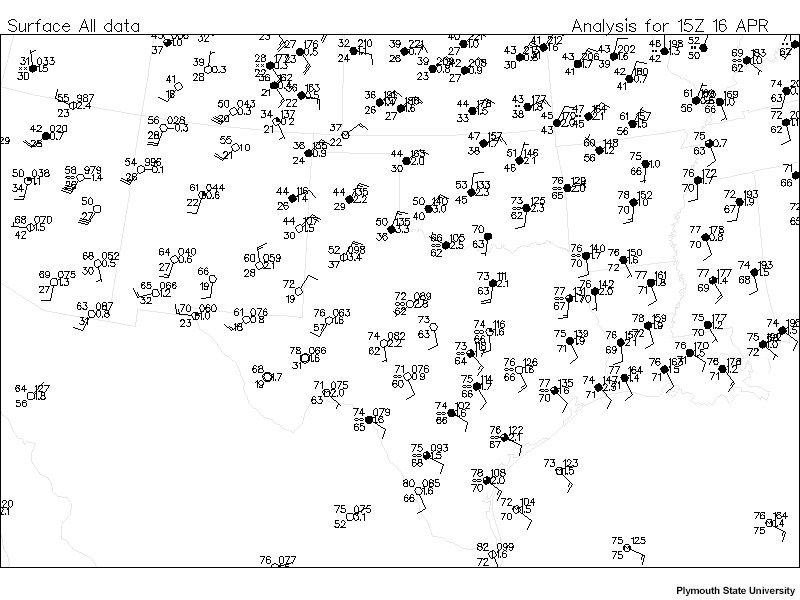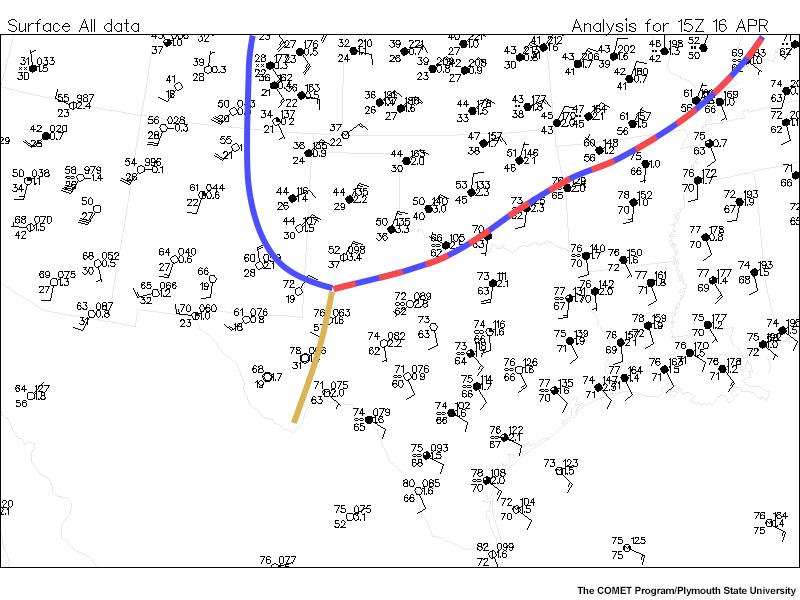Pre-Lab: Finding Fronts using Multiple Fields » Importance of 4th Dimension and Situational Awareness » Example 1
Question 1 of 1
Determine the location of any surface fronts by drawing them in with the pen tool(s). Available colors correspond to the standard color schemes mentioned above.

| Tool: | Tool Size: | Color: |
|---|---|---|
Here winds are approximately 10 to 15 knots on each side of a front and they oppose each other in direction - it is impossible to tell from this single map which way the front is moving (or not moving!). Thus, situational awareness is invaluable.
The flow and weak pressure trough through ArkLaTex into the MS and Ohio River confluence area suggests that perhaps a large cold front probably moved through and is weakening or stalling. There are two distinct airmasses - one that is cold, with air in the 30s-40s, dewpoints in the mid twenties to forty-ish neighborhood, and winds from the northeast, and another with warm temperatures in the 70s, dewpoints in the 60s and low 70s, and winds from the south or southeast. The frontal zone is the boundary between these two airmasses, and runs from the St. Louis area west-southwestward through central Oklahoma, into northern Texas and finishes in southeastern New Mexico - beyond that we cannot exactly determine the frontal location due to topographic influences (and sparse data).
Let’s look at an animation of previous surface analyses leading up to the time of the station plots:
We can see that only a few hours earlier the frontal boundary was moving much more quickly, being analyzed as a cold front, and only became stationary very recently.
